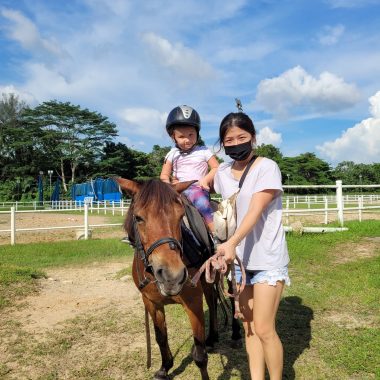Helping Our Daughter Push Through Multiple Therapy Sessions
Written by |

I often write about various types of therapy in relation to aromatic l-amino decarboxylase (AADC) deficiency, as I believe they are integral to the well-being of children with this disease. Before gene therapy, the accomplishments our 4-year-old daughter, Rylae-Ann, made during her therapy sessions prepared her for new life after gene therapy.
However, listing out what to do is the easy part; the hard part — motivating your child to push through the therapy sessions — often goes unspoken.
The most arduous therapy session is, without a doubt, physiotherapy. Also known as physical therapy, it’s an especially important type of treatment because there is not yet an approved treatment for AADC deficiency. There is no avoiding this journey, and it needs to be a part of your child’s routine.
Following are steps that can make the experience as enjoyable as possible for your child, so that they get the most out of each session.
Keep it interesting
There are several types of therapy sessions, and we continue to use a multipronged approach. Our daughter’s week features different types of therapies. This keeps her week interesting and helps her to learn a routine. It also adds a novel challenge by having her do similar movements in various forms.
For example, we added a trip to an indoor playground to her week to continue working on core muscle exercises that we learned from the therapist in a much more fun and exciting environment. Play is the highest form of research, so it can also improve cognitive development.

Rylae-Ann enjoys the indoor playground, where she can practice movements learned in physiotherapy sessions. (Photo by Richard E. Poulin III)
Combining therapies for different environments
Combining physiotherapy with swim therapy provided a new environment where we could practice movements we learned from the physical therapist. Our daughter’s favorite activities are being in the pool and doing swim therapy. It provides buoyancy to ease physical exercises and thus encourages her to move. As her confidence increased in the pool, she was more comfortable doing the same movements back on dry land.
Additional types of paramedical therapy you might consider adding in conjunction with physiotherapy include swim therapy, horse therapy, sensory integration, and occupational therapy. Each has its own unique goals, but that will depend on the accomplishments made during physiotherapy.

Rylae-Ann and her mom pose for a picture after an enjoyable horse therapy session. (Photo by Richard E. Poulin III)
When the tears start to fall
Expect cries and tears. For years, sessions were stressful for our daughter and us. Thankfully, our physical therapists reassured us each session, and we trusted them implicitly. And I am glad we did, because when I first saw my daughter wailing nonstop during her first session, I immediately felt a parental instinct to rescue her.
Over time, we learned. As the physical therapist worked, we would find our roles. Sometimes it meant being alongside our daughter and encouraging her by holding stuffed animals or her favorite toy, or acting like a monkey (which I have perfected quite well). Other times, we needed to take a back seat or even leave the room.
Often, we were the triggers of her cries. So we would come in when needed with a cool towel and water during her breaks. Work with the therapist to find this balance, because you have an essential role, too.

As Rylae-Ann’s physical therapist supports her to do standing exercises, her father motivates her with a toy. (Photo by Richard E. Poulin III)
Early intervention is vital
I wish we would’ve started physiotherapy much sooner. However, we were unsure what our daughter had, and we were fearful of inducing a seizure, so we didn’t start it until we learned more about AADC deficiency. Even then we were still timid about starting it, because there weren’t many resources indicating where to begin.
In our experience, starting early allows a child to become familiar with the movements and positions they will experience, and it reduces anxiety as the difficulty level increases. They can begin to progress even though the gains may not be perceptible. It can also support proper bone development and prevent a dislocated hip. As the child builds muscles and becomes more familiar with positions, they can learn to stand and eventually walk.
Starting early also can speed up the progress they can make after gene therapy. Getting children to feel comfortable and confident is the first step, but it takes time and patience. Our daughter was very resistant to these exercises at first and would cry nonstop. After a session, I would take her into my arms, where she would sniffle her way to sleep. It felt so good to hold my little champion in my arms after her sessions, but it’s difficult to push her.
Not only will our children need to bravely push through each session, but so do we as parents. We must commit and be a beacon that guides them across each session’s finish line.
Note: AADC News is strictly a news and information website about the disease. It does not provide medical advice, diagnosis, or treatment. This content is not intended to be a substitute for professional medical advice, diagnosis, or treatment. Always seek the advice of your physician or other qualified health provider with any questions you may have regarding a medical condition. Never disregard professional medical advice or delay in seeking it because of something you have read on this website. The opinions expressed in this column are not those of AADC News or its parent company, Bionews, and are intended to spark discussion about issues pertaining to aromatic l-amino acid decarboxylase deficiency.






Leave a comment
Fill in the required fields to post. Your email address will not be published.